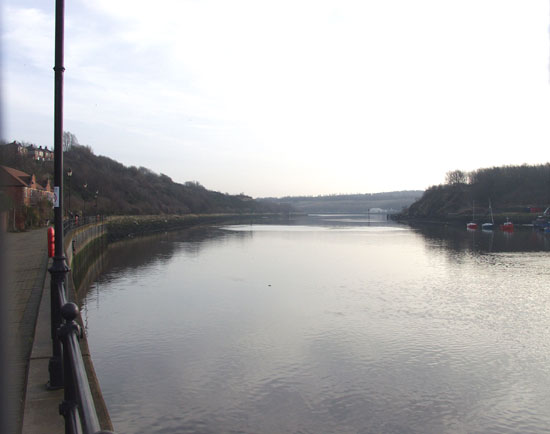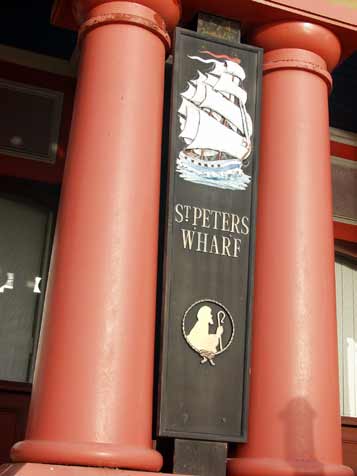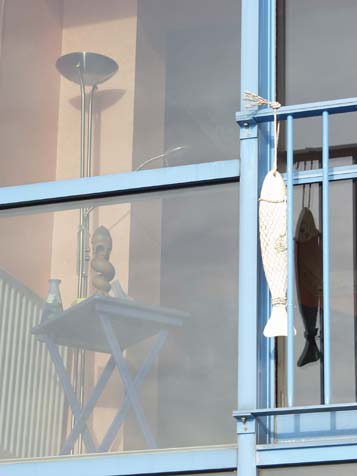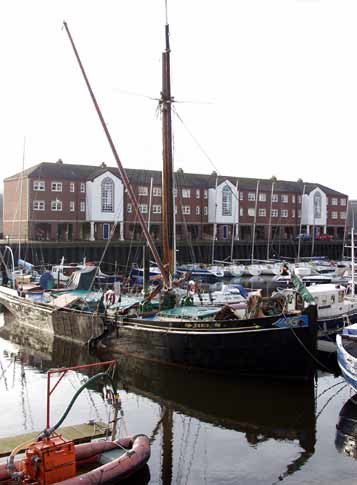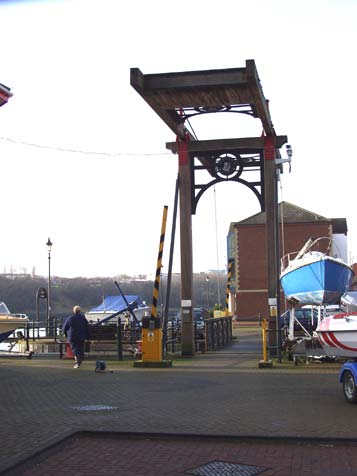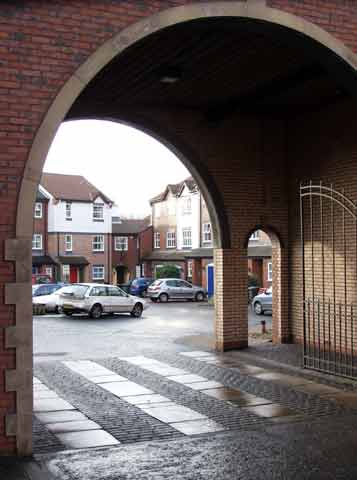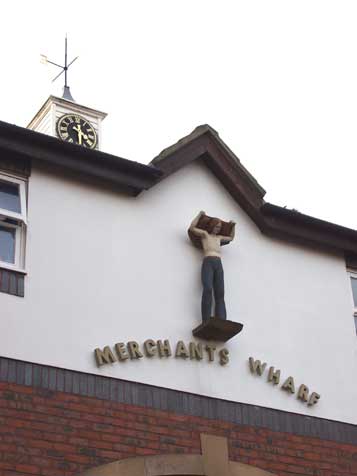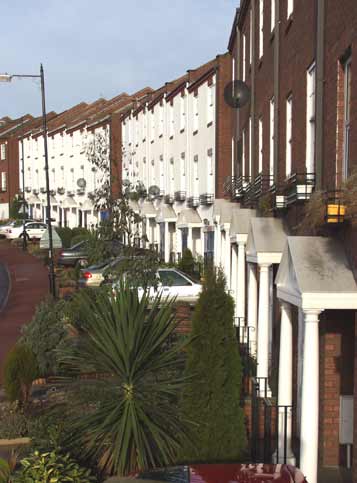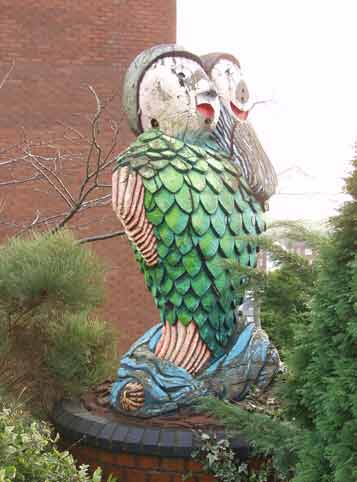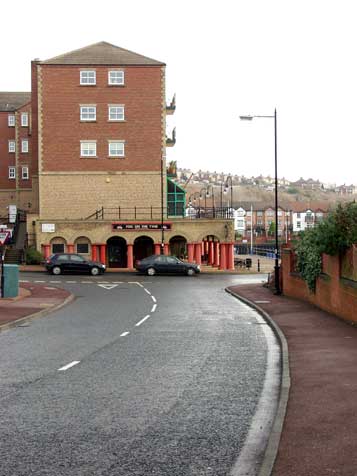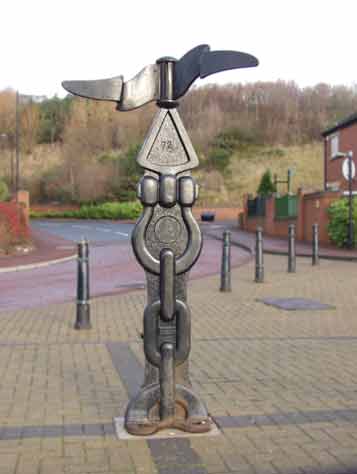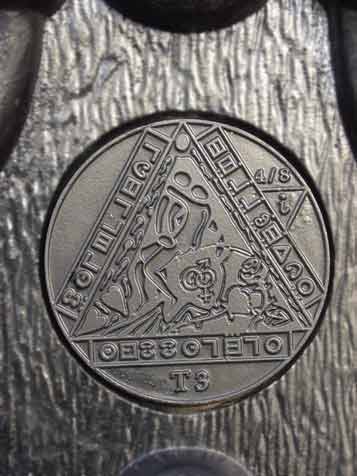|
|
|
Yuppieville?
Sat 13th Jan., 2002
|
 |
 |
 |
|
The riverside of Newcastle has always bristled with maritime activity. When shipping declined during the mid 20th
century and the Riverside rail branch was closed an opportunity arose for new housing development.
During the 1980s the
Tyne & Wear Development Corporation was formed to channel European redevelopment money and political policy. St. Peter's fell within the purview and the factories and warehouses were cleared and the land
handed to Barratt Developers.
The maritime theme was taken up in naming the new housing development that is arranged into neighbourhood squares around a central Marina. |
|
 |
|
The initial developer's promotion for these properties emphasised the exclusive and therefore expensive nature of the
housing project.
That it was centred around a marina with berths for yachts and boats further encouraged this aura of snobbery.
The first tenants moved in during 1990 and since then there has
been a lively trade in properties here. It has now matured and the initial pretentiousness has evaporated.
The housing is compact and inward facing, although some properties have large riverside
windows. There is a mixture of rented and freehold dwellings of various sizes. |
|
|
|
|
 |
 |
|
The marina was created on the site of a railhead and warehouse complex. It is surrounded on three sides by regimented
flats with colonnades on the ground floor.
The rather plump columns are modelled on the cast iron supports of the 18th century. The modern versions are concrete and steel inserts surrounded by glass
reinforced plastic covers.
The marina administration office is very sea-shanty, with wooden board facing painted gaudy yellow and red. A narrow channel connects the harbour with the river, and a
counterweighted hinged bridge common in the Netherlands spans the entrance. |
|
 |
|
The developer's architects approached the blank sheet project with a Disney zeal for form, function and a film set
feel.
The marina was officially opened by Her Royal Highness the Princess of Wales on April 3rd, 1991.
There are limited facilities for shore repairs for the boats. There is a derrick for
lifting craft and the river is tidal at this point.
The eastern side of the marina is overlooked by larger dwellings with small gardens to the front. The views are carefully arranged to hide the
remaining industrial buildings and maintain the illusion of isolation. |
|
|
|
|
 |
 |
|
Here is the entrance for vehicles into Merchant's Wharf. There are smaller pedestrian arches; one of which is visible
in the distance.
These neighbourhood squares have a central shrubbery island and car park, and other car parking is provided at the front of the properties.
Those iron gates are a fancy and are
seldom closed. The entrances are crowned by small shingled clock towers topped by dilapidated weather vanes. None of the clocks that I saw were working and I doubt if they ever did.
The arch rooves
also supported fancifully sculpted seagulls and prowling pussycats. |
|
 |
|
The archways also carry small sculptures to set the scene. Here a rather anorexic and androgynous lighter person
carries a sack. Now that suggests merchants, doesn't it.
The nearby Trinity Courtyard is signalled by a little lighthouse.
I imagine that these entrance gatehouses contain workers employed by
the residents whose sole purpose is to pour boiling oil and boulders onto the heads of invaders passing through the archway.
Far from being just pretty ornaments, they are instrumental in maintaining
the exclusion that the original designers wished to encourage. |
|
|
 |
|
Dobson Crescent curves up the hill towards St. Lawrence Road. The frontages have been given the Regency feel with
those little Doric porches.
The giddy look to this picture is in small measure due to the camera lens, but that lamp post really is leaning about ten degrees from the vertical.
The original
road names in this area suggest the industry located here since 17th century. Glasshouse Street leads down from the junction of Walker Road and Raby Street, and Bottlehouse Street leads one into the housing
complex.
To the north of this scene is the Byker Refuse Reclamation Plant; its tall chimney is difficult to hide. This controversial facility is supposed to sort and burn rubbish in special boilers to
provide heating for the nearby Byker Wall housing complex. |
|
|
|
|
 |
 |
|
At the top of Dobson Crescent these fishy wooden dollies gaze out like relatives of Mr. Blobby on Prozac.
I
love these curious figures and I think it is good that we have sculptures in our communities. Statues and art should not just be for ceremonial use. |
|
 |
|
Above is a view looking east along the River Tyne towards the sea from the Marina. The left turn is St. Anthony's
Point; Friar's Goose and Felling Shore is on the Right hand bank.
Here, at the foot of Bottlehouse Street, is the gable end of St. Peter's Wharf that surrounds the Marina. The pub housed on the ground
floor is named "Fog on the Tyne", an allusion to the famous Lindisfarne song. I wonder if the bar offers support to an ageing Lady Eleanor?
The early 20th century St. Anthony's housing is visible in
the distance. |
|
|
|
|
 |
 |
|
Here, beside the riverside path is one of the hundred or so mile posts paid for by the Royal Bank of Scotland to
support the National Cycleway.
This combination of styles and icons was designed by D. Andrew Rowe in 1988, and is, as can be seen, number 72.
The distance messages are on the other side and
tell us that there are another 9½ miles to pedal to Whitley Bay. There are no metric equivalents here; this converts to 15.2 km. |
|
 |
|
The finger post support contains this curious bolted on disc.
I have puzzled over its possible meaning for an
hour or two and have arrived at no conclusion. If you have any ideas I would welcome an email.
St. Peter's Basin is a valiant and broadly successful attempt at creating zones where people should
become friendly and co-operative towards each other.
That this achieved by exclusion is a pity. The built environment of the squares encourages community by their compact inward facing aspects, whilst
keeping out the nasty world with those arched entrances and guardian gates. |
|
|
 |
 |
|
Site and contents (unless otherwise stated) © Tim. Pickford-Jones and Timmonet, Newcastle upon Tyne,
United Kingdom. |
|
 |
|
|
 |
|
If you should arrive here via a search, or be missing the navigation on the left hand side, click this button.
|
|

